Are you looking for a way to get rid of your back pain? If so, then you may want to consider using an inversion table. Inversion tables are a great way to relieve back pain, and they can also help to improve your overall health.
Contents
What Causes Back Pain?
There are many things that can cause back pain, but most often it is due to tight or tense muscles, damage to the soft tissues, or spinal misalignments. When muscles are tight, they can pull on the bones and cause pain. damage to the soft tissues can also lead to back pain.
This can be caused by impact activities like running or playing sports, or by repetitive motions like sitting at a desk all day. When the disks that act as cushions between the bones of your spine compress from gravity and body weight, it can also cause pain.
In some cases, compressed nerve roots can increase back pain. Teeter inversion tables are a great way to relieve back pain because they use gravity to decompress the spine and relieve pressure on the discs and muscles.
Back Pain
There are many things that can cause back pain, from tense muscles to damage to the soft tissues or spinal misalignments. Sometimes, it can be hard to figure out exactly what is causing your back pain.
One common cause of back pain is tense muscles. When the muscles in your back are tight, they can put pressure on the spinal cord and nerve roots, which increases pain. Gravity can also cause compression of the spine, which can lead to pain.
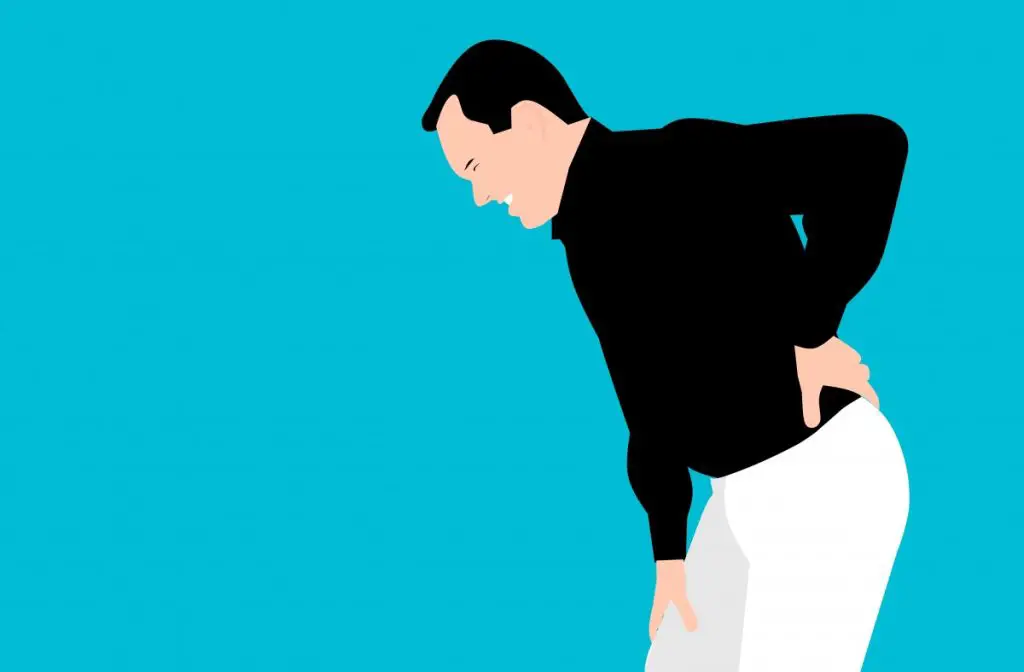
Another common cause of back pain is damage to the soft tissues. This includes the disks, which are spongy discs that act as cushions between the vertebrae, and the ligaments and muscles that support the spine. Impact activities like running or playing tennis can damage these tissues, leading to pain.
Finally, spinal misalignments can also cause back pain. This happens when the vertebrae in your spine are not lined up properly. This can happen due to injury, poor posture, or repetitive motions. Teeter inversion tables can help align your spine and reduce back pain.
Sciatica
Sciatica is nerve pain that runs through the buttocks, down the back of the leg, and into the ankle or foot. It is a symptom of several different backs, pelvis, and hip problems, and can also occur as a result of pregnancy. The most common cause is a herniated disc.
Sciatica can be caused by a number of different things, but most commonly it is caused by a herniated disc. This occurs when the gel-like center of a disc ruptures through its tough outer layer and presses on the sciatic nerve. The sciatic nerve is the longest nerve in your body, running from your lower back all the way down each leg. A herniated disc can occur at any age but is most common in people over age 40 who have degenerative disc disease.
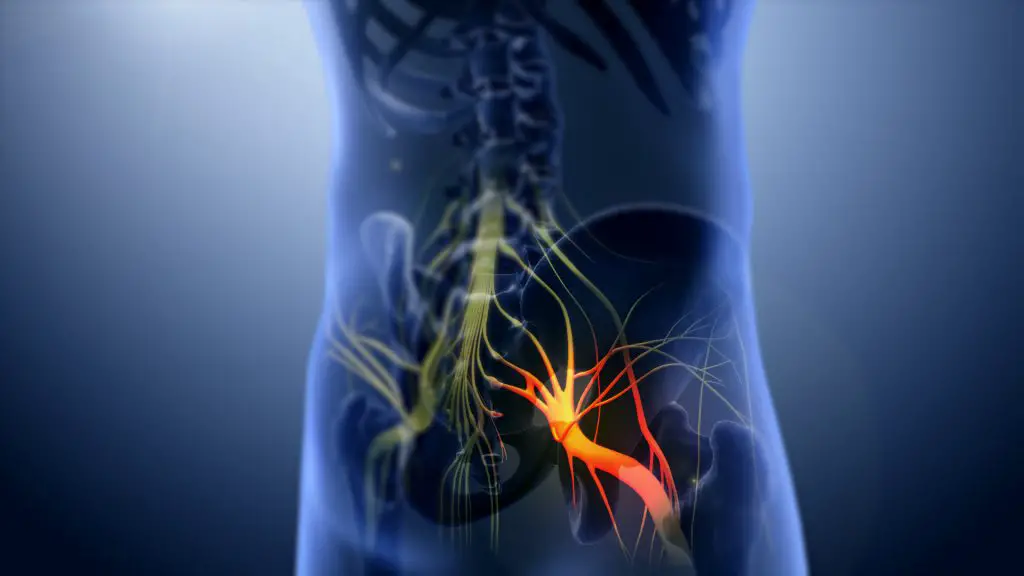
The pain from sciatica can vary widely. Some people have only mild discomfort while others have excruciating pain that interferes with their daily activities. Sciatica can also cause numbness, weakness, or tingling in the affected leg or foot.
For most people, sciatica will improve gradually with time and self-care measures such as exercise, stretching, and over-the-counter pain relievers. If your symptoms are severe or persist for more than a week, you should see your doctor to rule out other possible causes of your pain such as a spinal injury or infection. If conservative measures fail to relieve your symptoms, surgery may be an option.
Spinal Degenerative Joint Disease
Joints are the places in our body where two bones come together. Our bones are connected to each other by strong ligaments. In order to move our joints, the muscles must be strong enough to move the bones.
The ends of our bones are covered with a smooth substance called cartilage. This cartilage allows our joints to move smoothly and without pain. If the cartilage deteriorates, becomes thinner, or wears away, we may start to feel pain in that joint. This is called Spinal Degenerative Joint Disease (DJD). DJD can affect any joint in our body but is most common in the spine.
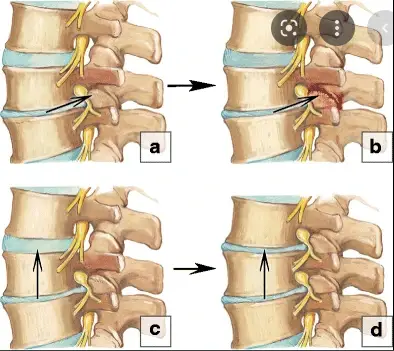 The spine is a series of joints that are held together by strong ligaments. The discs between the vertebrae act as shock absorbers and allow us to bend and twist without pain. However, as we age, the discs may become thinner and lose some of their shock-absorbing ability. This can lead to pain when we move because the bones rub against each other causing inflammation.
The spine is a series of joints that are held together by strong ligaments. The discs between the vertebrae act as shock absorbers and allow us to bend and twist without pain. However, as we age, the discs may become thinner and lose some of their shock-absorbing ability. This can lead to pain when we move because the bones rub against each other causing inflammation.
There are several treatment options for DJD including physical therapy, medication, and surgery. Physical therapy can help to strengthen the muscles around the affected joint and may also include joint mobilization and/or exercises that help to decompress the joints.
These decompression exercises use suction forces created by the therapist’s hands to separate the vertebrae and take pressure off of the disc so that it can heal. Surgery is usually the last resort when all other treatments have failed. If you think you may be suffering from DJD, please consult your doctor or physical therapist for an evaluation.
Muscle Tension
Back pain is a common problem that can be caused by a variety of factors. One of the most common causes of back pain is muscle tension. Muscle tension occurs when the muscles are used repeatedly or held in an awkward position for an extended period of time. This can lead to a build-up of lactic acid in the muscles, which can cause a painful burning sensation.
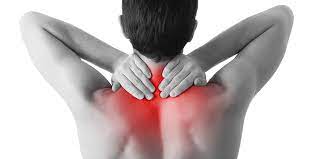
Inversion therapy is a type of treatment that involves hanging upside down for an extended period of time.
This helps to stretch the muscles and soft tissues in the back, which can relieve some of the tension and pain. Inversion therapy sessions are usually conducted by a physiotherapist at a shallow angle, using a device such as an inversion table or inversion chair. People with back pain often find relief after just one or two sessions of inversion therapy.
However, it is important to note that this type of treatment is not suitable for everyone. If you have a history of high blood pressure or heart disease, you should not participate in inversion therapy without medical approval.
Spinal Curvature Due to Tight Muscles
When the spine is in its natural, neutral position, the muscles surrounding it are at their least stressed. This healthy posture balances the tension on all of the muscles, ligaments, and spinal discs so that none of them are overworked. However, when the spine is out of alignment due to tight muscles, this balance is interrupted and pain results.
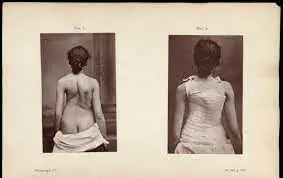
There are several common causes of back pain that stem from tight muscles and weak muscles. When the abdominal muscles are weak, they can no longer support the spine in its natural position. This causes an imbalance of tension in the spine and can lead to pain. Similarly, when the hip flexor muscles are tight, they pull on the lower back and can cause pain.
Tight and weak muscles can both lead to an unhealthy posture that causes back pain. To ease this pain and prevent it from returning, it is important to improve your posture. This means stretching tight muscles and strengthening weak ones so that your spine can remain in its natural position. In doing so, you will restore balance to your musculature and find relief from back pain.
Herniated Disc
A herniated disc occurs when the disc’s outer layer tears and the soft inner gel leaks out. This can happen with any type of injury, such as a car accident or from lifting something heavy. The gel puts pressure on the spinal cord or nerves, which can cause pain.
The discs are designed to act as cushions between the vertebrae. They work by absorbing shock and allowing the spine to flex and bend. Each disc has a tough outer layer and a soft inner gel. The inner gel is what allows the disc to act as a cushion.
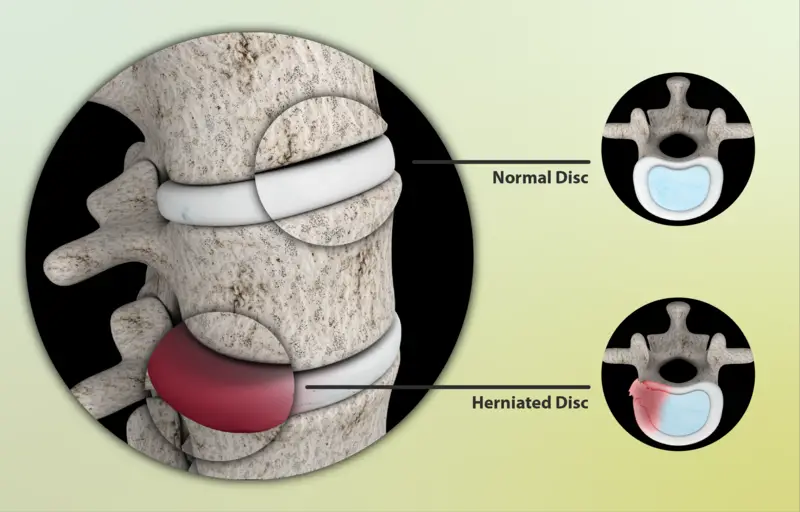
When a disc herniates, it means that the inner gel has leaked out through a tear in the outer layer. This can happen because of an injury or from lifting something heavy. When the gel leaks out, it puts pressure on the spinal cord or nerves. This can cause pain, numbness, and weakness in the arms or legs.
Inversion therapy is a type of treatment that involves hanging upside down to stretch the spine and take pressure off of the discs. Inversion therapy is not recommended for people with herniated discs because it can actually make the condition worse.
Degenerative Disc Disease
Degenerative disc disease (DDD) is the medical term for the wear-and-tear changes that occur in your spinal discs as you age. Spinal discs are jelly-like cushions between your vertebrae, or back bones. They act as shock absorbers, preventing your vertebrae from rubbing against each other as you move.
With age and daily use, your discs can become less flexible and start to break down, or degenerate. This can cause inflammation and pain in the surrounding nerves. In some cases, it can also lead to the formation of bone spurs, which can further compress surrounding nerves.
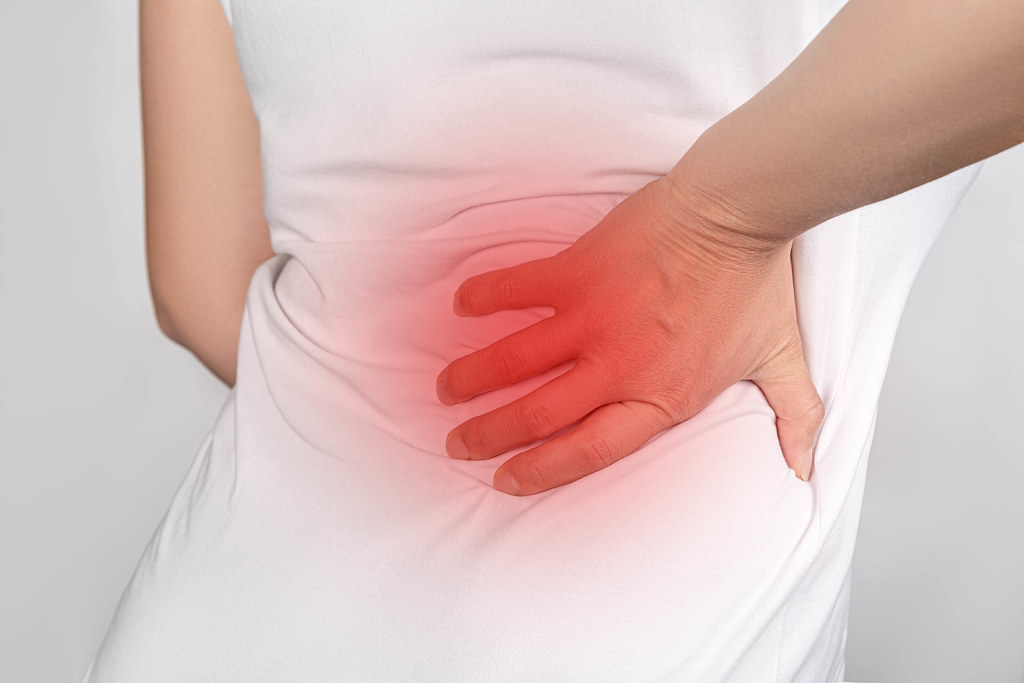
Disc degeneration is a natural process that happens to everyone as they age. However, some people may experience more severe degeneration due to factors such as obesity, smoking, and repetitive strain injuries.
Treatment for degenerative disc disease typically focuses on relieving pain and restoring normal function. In most cases, this can be done with nonsurgical treatments such as physical therapy, exercise, and pain medication. However, surgery may be recommended in severe cases or if conservative treatment does not provide relief.
Spinal Stenosis
Spinal stenosis is a condition in which the spinal canal narrows, putting pressure on the spinal cord and nerves. This can cause pain, numbness, or weakness in the legs and low back. Spinal stenosis is usually caused by wear and tear on the spine, such as from osteoarthritis. It can also be caused by a herniated disc, tumors, or injury.
In some cases, spinal stenosis can be relieved with nonsurgical treatments such as exercises, physical therapy, and medications. In other cases, surgery may be needed to relieve the pressure on the nerves.
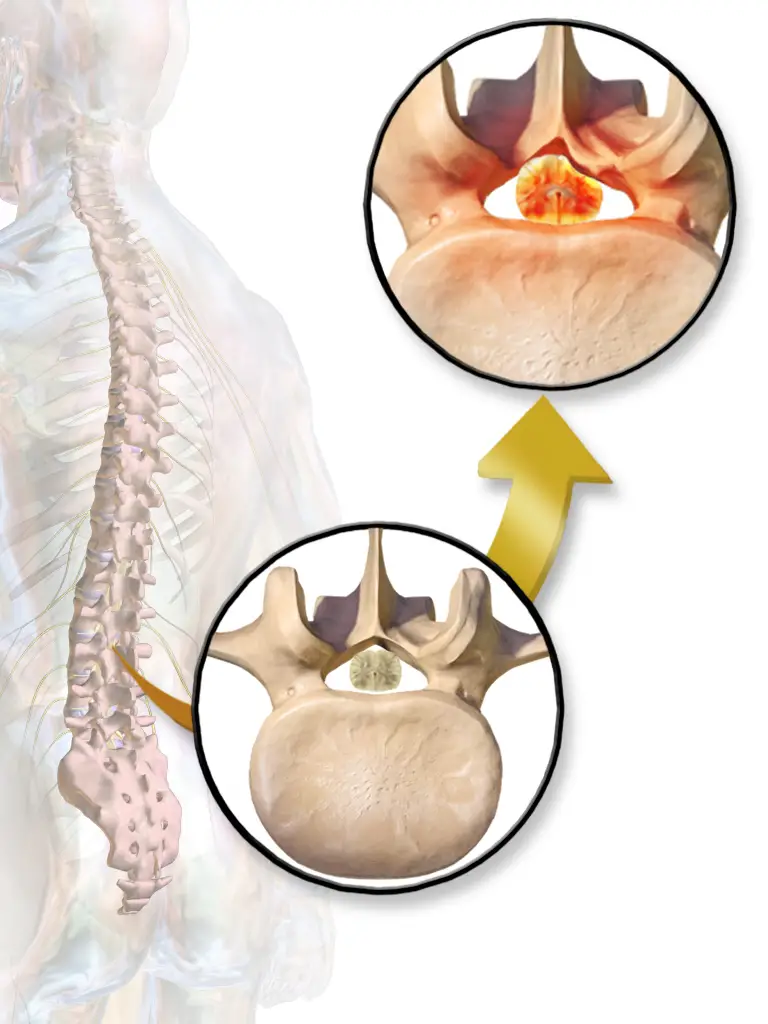
One nonsurgical treatment for spinal stenosis is inversion therapy. This involves hanging upside down for short periods of time to reduce the pressure on the spine. Inversion therapy can be done using an inversion table or by hanging from a bar attached to the ceiling.
Inversion therapy is not right for everyone with spinal stenosis. People with certain conditions such as high blood pressure or glaucoma should not do this type of therapy. In addition, people who are pregnant or have heart disease should talk to their doctor before trying inversion therapy.
In general, inversion therapy is safe when it is done correctly. However, there are some risks associated with this type of treatment. These include dizziness, nausea, headaches, and eye pain. In rare cases, people have been injured while using inversion tables or bars.
Facet Syndrome
Facet syndrome is a condition that results when the facet joints become painful. These joints are the small joints between each vertebra in the spine. The facet joints allow the spine to move while still providing stability.
Facet syndrome can be caused by a number of different things. One common cause is wear and tear on the facet joints. As we age, the cartilage that cushions the facet joints can start to wear down. This can lead to pain and inflammation in the joints.
Another common cause of facet syndrome is injury to the facet joints. This can happen from a sudden impact or from repetitive stress on the joints. If the facets are not able to move properly, it can lead to pain and inflammation.
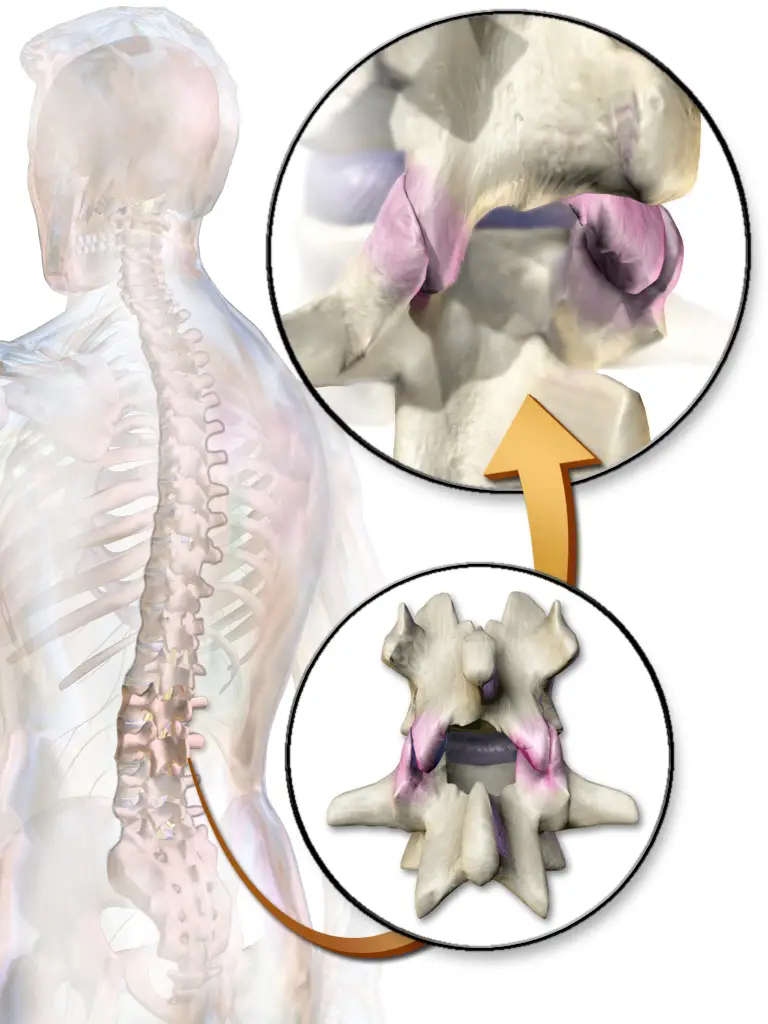
Finally, Facet syndrome can also be caused by arthritis. Arthritis is a condition that causes inflammation in the joints. This inflammation can damage the cartilage and cause pain in the facet joints.
Facet syndrome is treated with a variety of different methods depending on the severity of symptoms. Many people find relief with over-the-counter pain medications such as ibuprofen or acetaminophen. If these don’t work, your doctor may prescribe stronger medications or recommend physical therapy. In some cases, surgery may be necessary to relieve pain from facet syndrome.
Muscle Spasm
One anatomical problem that can cause back pain is muscle spasm. This is when a muscle in your back contracts and doesn’t relax. This can happen because of an injury, overuse, or another medical condition. When the muscle is in spasm, it may put pressure on your spine or compress a nerve. This can cause pain, numbness, or tingling in your back or legs.
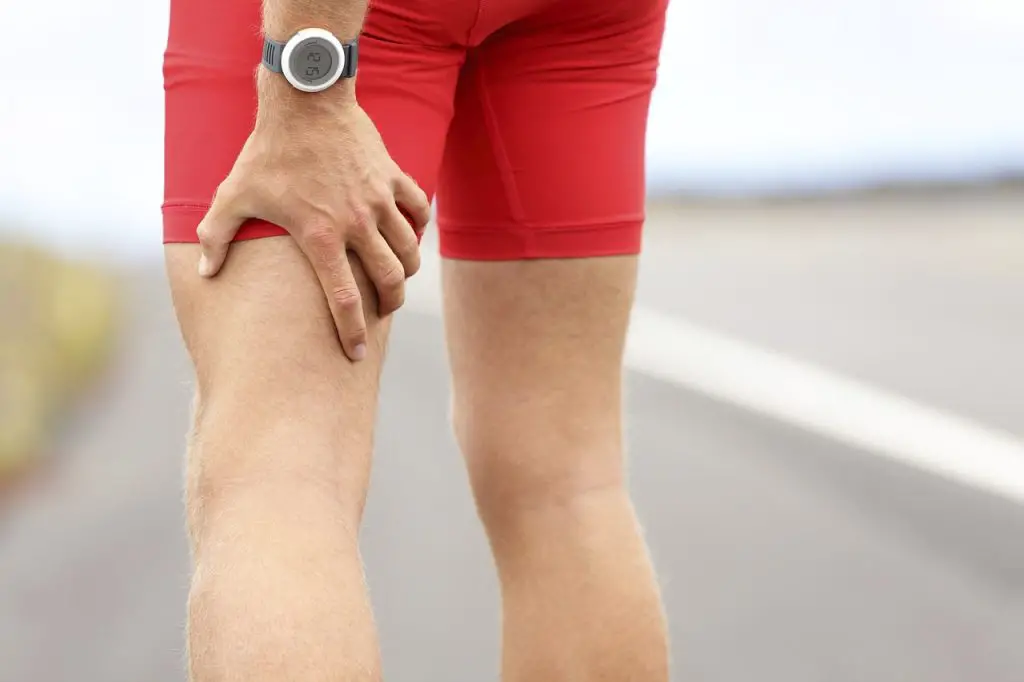
There are several things you can do to treat muscle spasms. You can take anti-inflammatory nonsteroidal anti-inflammatory drugs (NSAIDs) like ibuprofen or naproxen to help ease the pain and inflammation. You can also apply heat or cold packs to the affected area. If the muscle spasm is severe, your doctor may inject it with a steroid medication. There are also some stretches and exercises you can do to help relieve the pain and prevent future episodes of muscle spasm.
Can Inversion Tables Be Used To Treat Lower Back Pain?
Can inversion tables be used to treat lower back pain? This is a question that many people ask, but the answer is not always clear.
Inversion therapy is a type of treatment where the patient is suspended upside down for a brief period of time. This can be done using an inversion table, which is a special piece of equipment designed specifically for this purpose.
The theory behind inversion therapy is that it can help to stretch out the spine and relieve pressure on the discs and nerves. This can potentially help to relieve back pain and improve mobility.
There is some evidence to support the use of inversion therapy for lower back pain relief. One study found that it could be effective for treating muscle injury and pain, as well as spine-related issues such as broken bones and surgery recovery.
However, it’s important to note that inversion therapy is not suitable for everyone. If you have high blood pressure or heart problems, you should not attempt this type of treatment without first speaking to your doctor.
Overall, inversion therapy may play a vital role in lower back pain relief for some people. If you are considering this type of treatment, it’s important to speak to your doctor first to ensure that it is safe for you.
What Other Conditions Can Be Treated With Inversion Therapy?
Inversion therapy can be used to treat a number of different conditions. One study showed that inversion therapy can help relieve back pain associated with degenerative disc disease. In another study, inversion therapy was found to be effective in treating sciatica, a condition that causes pain in the spine and legs.
In addition to back pain, inversion therapy has also been found to be effective in treating kidney stones and gallstones. Inversion therapy can also help relieve muscle tightness and improve circulation. If you are interested in trying inversion therapy, you can purchase an inversion table from an inversion equipment company.
How To Use An Inversion Table To Treat Back Pain?
If you’re looking for an effective way to relieve back pain, you may want to consider using an inversion table. By inverting your body, you can elongate your spine and take pressure off of your disks and nerves. While there are some risks associated with inversion therapy, it can be a safe and effective way to find relief from back pain. Here’s how to use an inversion table to relieve back pain:
First, consult with your doctor to see if inversion therapy is right for you. If you have any health conditions or injuries, inversion therapy could make your condition worse.
When you’re ready to use the inversion table, start by lying flat on your back with your arms at your sides. Slowly raise the table until your body is inverted at a comfortable angle. You can start at a 20-degree angle and work your way up to steeper angles as you get used to the table.
To stay secure while you’re inverted, be sure to use the straps or other safety features that come with the table. Straps should be placed around your ankles, hips, or thighs (depending on the model of the table) so that you don’t slip out while you’re inverted.
Once you’re secure on the table, stay inverted for as long as is comfortable – anywhere from 1-3 minutes for beginners to 15-20 minutes for those who are more experienced with inversion therapy. You can also try various angles to see what works best for you. Just be sure not to overdo it – inverting for too long or at too steep of an angle can cause dizziness or nausea.
If you have any pain while using the inversion table, stop immediately and consult with your doctor. When used properly, inversion therapy can provide significant relief from back pain. However, it’s always important to listen to your body and stop if something doesn’t feel right.
Evidence That Inversion Tables Help Lower Back Pain?
A recent study found that inversion therapy may help decrease lower back pain. The study, which was conducted on a group of participants with surgery for lumbar disc herniation, found that inversion therapy can help relieve pain and improve function.
The study compared the results of two groups of patients who underwent lumbar disc surgery. The first group was given inversion therapy, while the second group was not. The researchers found that the group who received inversion therapy had significantly lower levels of pain and disability than the control group. They also found that the inversion group had fewer differences on diagnostic tests, suggesting that inversion therapy may help improve function as well as pain.
These findings suggest that inversion therapy may be an effective treatment for lower back pain. If you are considering this type of treatment, be sure to talk to your doctor to see if it is right for you.
Who Should Not Use Inversion Tables?
Here are some people who should not use inversion tables:
- People with high blood pressure.
- People who have had recent spinal injuries.
- People with cerebral sclerosis or other blood pressure issues.
- People taking blood clotting medication or with a history of blood clotting issues.
- People with bone loss or other degenerative diseases.
Frequently Asked Questions
How do you relieve lower back pain fast?
There is no one answer to this question, as the best way to relieve lower back pain may vary depending on the individual and the severity of their pain. However, some methods that may help to relieve lower back pain include applying heat or ice to the affected area, taking over-the-counter pain medication, doing gentle stretches or exercises, and avoiding activities that aggravate the pain.
What are the 3 causes of lower back pain?
- Strained muscles
- Bulging or ruptured discs
- Arthritis
What is the most common cause of lower back pain?
The most common cause of lower back pain is muscle strain.
back pain, physical therapy, complete guide, physical therapist, healthcare provider, pain relief, many people, low-back pain, few days, hip flexors, glute medius, medical advice, pain relievers, good posture, lumbar spine, spinal cord, great way, protected health information, posterior chain, pain coach, online brokers, personal loans, few weeks, medical center, blood flow, bed rest, physical activity, knee-to-chest stretch, trunk rotation, poor posture, specialists, back injury, medicine, physical therapist, diagnosed, pain relief, glute, sciatica, knee, nerve damage, psoas muscles, rehab, physical exam, healthcare provider, hips, herniated disc, musculoskeletal, diagnostic, chronic back pain, back pain, high heels, pain signals, laminectomy, neuropathy
The lowdown
Inversion therapy has been around for centuries, but only recently has it gained popularity as a means of short-term pain relief. While there is still a lack of better-quality research on its effects, inversion therapy is often recommended by doctors as it is one of the safer treatments available.
There are many different inversion products on the market, but they all have a similar effect. By suspending yourself upside down or at an angle, you take the pressure off your spine and decompress the discs. This can help to relieve pain caused by tight muscles, spinal misalignments, and compressed discs.
Many people find that using an inversion table provides the most relief. Teeter is one of the leading brands when it comes to inversion tables and they offer a wide range of tables to suit all budgets. Their tables are also third-party quality tested, so you can be sure that you’re getting a product that is built to last.
If you’re suffering from back pain, then inversion therapy may be worth considering. It’s a natural way to relieve pain and can be done in the comfort of your own home. Be sure to talk to your doctor first and then take a look at Teeter’s range of inversion tables.

James Nystrom is a leading researcher in the field of hip pain. He has spent his career studying the latest treatments and techniques for relieving hip pain, and he is known for his innovative approach to care. He is passionate about helping his patients find relief from their pain and improving their quality of life. He is also a huge fan of inversion therapy and all things related to health and well-being.

